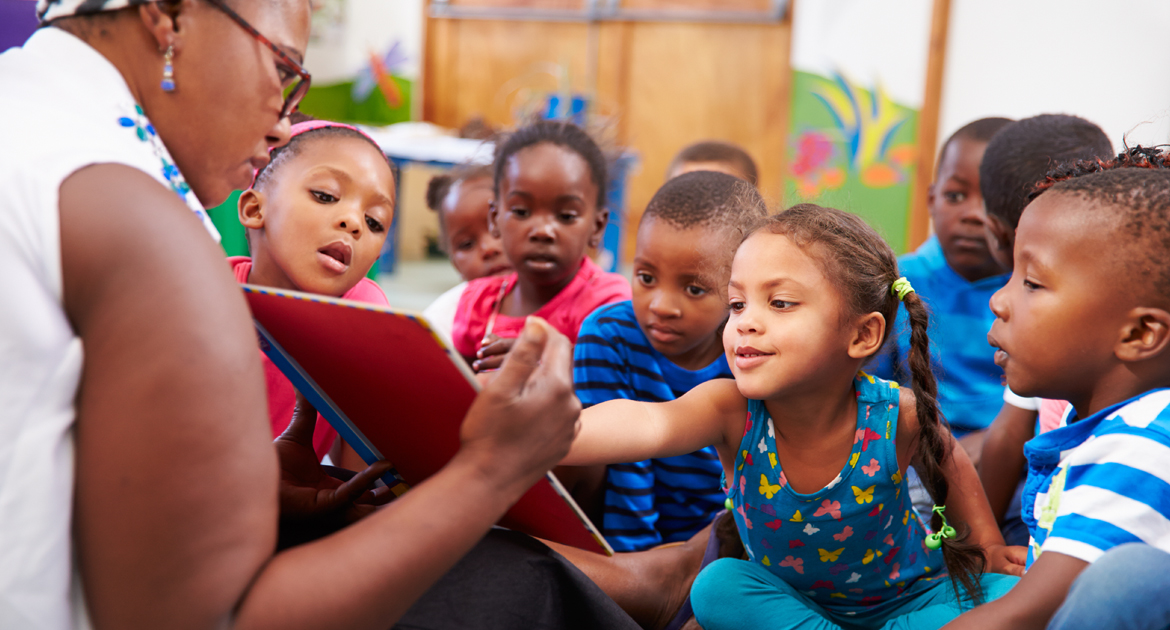TK
PreK Language Model: Dual Language Approach
Setting:
Teacher Maria has been teaching in a bilingual (Spanish-English) state preschool program in a multilingual, multicultural region of Los Angeles for two years. Having grown up in a Spanish-speaking household, she is fully fluent in Spanish. Teacher Maria was educated in the U.S. and has a B.A. degree in Human Studies from a state university in California. Aside from one course on the growth and development of children from diverse backgrounds, she has received very little instructional guidance on teaching methodologies or practices for Multilingual Learners (MLs).
Teacher Maria is using a state-approved early childhood curriculum that has been translated into Spanish. The school in which she teaches has adopted an alternate day approach to the language of instruction, with one day taught in each language followed by a day in the alternate language. During the unstructured parts of the preschool day, such as dramatic play and outdoor time, Teacher Maria encourages all the children to communicate in whatever language is most comfortable for them, which fosters maximum language interactions and meaningful participation of all children.
During the summer, Teacher Maria attended a course on how to implement dialogic reading strategies in a dual language classroom. Since she has been implementing a policy of language separation (i.e., using either Spanish or English for instruction on a given day, but not mixing the languages), she is wondering about how to respond to children’s Spanish-language contributions to the dialogic reading activity during the English language day.
Teacher Maria knows that student engagement, comprehension, and participation are so important to acquiring new literacy skills in any language.
Teacher Behavior:
On one English language day, Teacher Maria is reading the book Froggy Gets Dressed by Jonathan London in English and stops to ask children what they wear on cold weather days. (The book is about all the cold-weather gear one must wear on snowy days.) The book contains many alliterations (words with the same beginning sound) and rich vocabulary words important to early literacy. The dialogic reading method includes specific techniques, such as asking what, where, and why questions to encourage children’s participation in and engagement with the story line.
For example, after reading, the teacher says, “Froggy looked at himself from top to bottom. What could he be missing?” Several Spanish-speaking children shout out, “La chaqueta (his jacket)!” Teacher Maria knows it is important to recognize children’s language contributions and wants to reinforce their attention to the story line. Given that it is an English day of instruction, she is unsure if she should repeat in English what they say in Spanish, wait until a child responds in English, or reinforce what the children said in Spanish.
Teacher Maria is confused about how strictly to apply the language separation policy when engaging the children in literacy activities that include dialogic read-alouds. She knows that student engagement, comprehension, and participation are so important to acquiring new literacy skills in any language. She does not want to stifle their enthusiasm for the lesson, but she also wants to focus on the target language for that lesson, English. She spontaneously smiles back at the children and repeats, in English, “Yes, the jacket.” She points to a picture of a child’s jacket and says, “This jacket is blue.”
Teacher Maria then asks the group, “Do you wear a jacket to school?” They all reply “Yes,” most in English, but some in Spanish. Then Alejandro says, “Mi abuela, mi abuela me regaló una chaqueta nueva para mi cumpleaños y es verde.”
Teacher Maria then repeats what Alejandro has said in English: “Your grandmother gave you a new jacket for your birthday and it is green. Do you wear it every day to school?”
Alejandro smiles broadly and replies, “Yes.”
Reflection questions
- Which literacy instructional strategies did Teacher Maria use? How did they promote Multilingual Learners’ understanding of the text?
- How did Maria’s decision to use English to repeat what the children had said in Spanish support the children’s literacy development? What strategies do you use to encourage participation of all MLs during storybook reading?
- What other literacy development strategies can Teacher Maria use to support ML children? How can she extend this activity to promote literacy development during other classroom activities?


